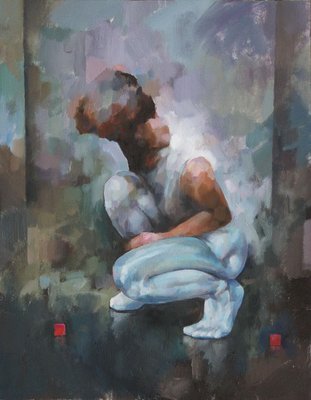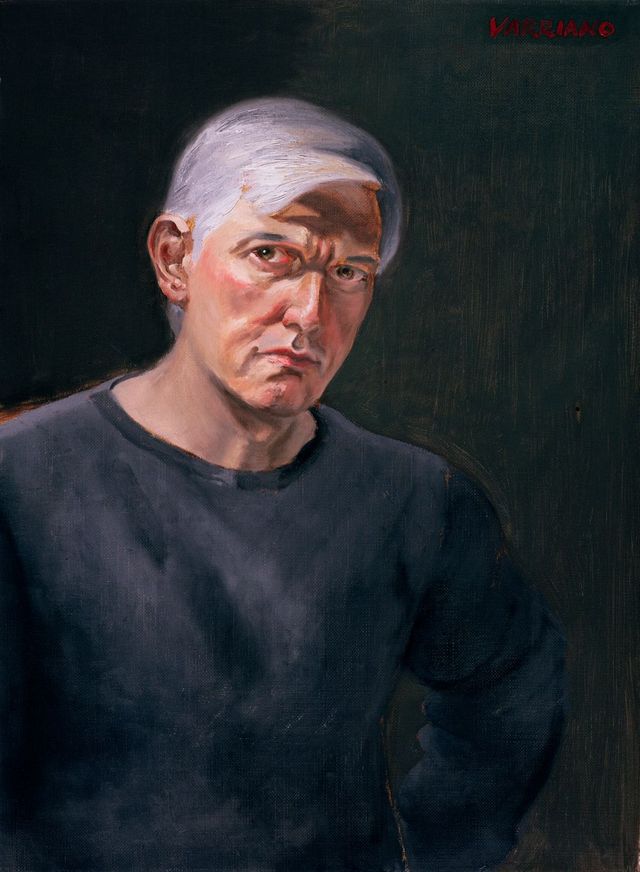The Development of Figurative Oil Paint: Recognizing Its Historic Importance and Modern Interpretations
The evolution of figurative oil paint functions as an engaging lens with which to analyze the interaction in between artistic expression and historic context. From the careful naturalism of the Renaissance to the emotive power of the Baroque, each period has actually contributed layers of definition and method to this timeless tool. Contemporary artists, attracting from this rich heritage, are now reinterpreting the human number in manner ins which test conventional stories. As we check out these changes, one must take into consideration exactly how the discussion between existing and past informs not just creative technique however also social representations in a progressively complex world.
Origins of Metaphorical Oil Painting
The origins of metaphorical oil painting can be mapped back to the early Renaissance in Europe, especially in the 15th century. This period marked a substantial departure from the inflexible types and level representations characteristic of middle ages art. Musicians began to check out naturalism, stressing the human number and its emotional expression. The advancement of oil paint permitted for greater depth of color and information, boosting the realism and vibrancy of their work.

In this transformative age, figures were commonly illustrated within contextually abundant environments, showcasing not just their physical attributes yet additionally their mental states. Leaders such as Jan van Eyck and Titian took advantage of the medium's flexibility, employing layering strategies to accomplish brightness and structure. This technology promoted the portrayal of elaborate fabrics and the nuances of skin tones, adding to the development of portraiture and narrative scenes.
Furthermore, the Renaissance focus on humanism promoted a gratitude for individualism, which subsequently influenced artists to produce more relatable and vibrant numbers - figurative oil painting. Therefore, figurative oil paint emerged as an effective automobile for storytelling and emotional interaction, laying the foundation for future imaginative activities and styles
Key Historical Movements
Considerable historic motions have shaped the development of metaphorical oil paint, each adding unique viewpoints and methods that expanded the medium's possibilities. The Renaissance marked a zero hour, stressing realistic look and the human form, with musicians like Leonardo da Vinci and Michelangelo pushing the boundaries of anatomical accuracy and viewpoint. Following this, the Baroque era brought remarkable contrasts of light and darkness, exhibited by Caravaggio, that infused religious styles with extreme emotionality.
The 19th century introduced Romanticism and Realism, where artists such as Delacroix and Courbet tested classic ideals, focusing on private expression and everyday life. The introduction of Impressionism further revolutionized the tool by highlighting the effects of light and shade, resulting in a separation from conventional depiction.
In the very early 20th century, movements like Expressionism and Cubism redefined metaphorical paint via abstraction and the expedition of emotional deepness. Each of these activities not only showed the social adjustments of their times but likewise prepared for contemporary analyses. The interaction in between these historical activities has produced a rich tapestry of styles and viewpoints, affecting modern-day musicians in their pursuit of catching the human experience on canvas.
Methods and Products Advancement

Throughout the Baroque duration, techniques such as chiaroscuro her latest blog and sfumato arised, enhancing the psychological vibration of figurative structures. Musicians began to try out lusters and impasto, controling appearance and brightness. By the 19th century, advancements like making use of pre-mixed paints in tubes changed availability, allowing artists to repaint en plein air and capture the short why not find out more lived effects of light.
The 20th century experienced the intro of synthetic pigments and tools, which increased the palette and changed the uniformity of oil paints. The expedition of new application methods, such as scheme knives and brushes of varying rigidity, further diversified imaginative expression. Collectively, these developments mirror the developing partnership between materials, strategies, and the artistic vision integral in figurative oil painting.

Contemporary Interpretations
Contemporary interpretations of metaphorical oil paint mirror a vibrant discussion in between custom and advancement, where musicians test developed standards and check out varied styles. This development materializes in different methods, as contemporary artists blend classical techniques with modern ideas, commonly attending to social, political, and individual narratives.
Numerous specialists draw inspiration from historical works, yet they instill their items with modern point of views, using the human type as a car for commentary on gender, culture, and identity. Artists increasingly try out abstraction, distortion, and multimedias, which permits a broader interpretation of the number and its context.
Moreover, the use of vivid color schemes and unconventional make-ups usually offers to interfere with traditional viewing experiences, prompting important involvement from audiences. This shift in emphasis prolongs beyond aesthetic appeals; it reflects an expanding awareness of the intricacies of human experience in an interconnected world.
As metaphorical oil painting proceeds to evolve, it stays a vital tool for exploring the nuances of modern life, symbolizing both a regard for heritage and a commitment to modern idea. The result is an abundant tapestry of expression that reverberates with the complexities of the Read Full Article modern-day human condition.
Effect On Modern Art
The influence of metaphorical oil painting on modern art is profound, as it has actually consistently inspired a myriad of creative motions and techniques throughout the 21st and 20th centuries. From Expressionism to Surrealism and beyond, the exploration of the human figure has stayed a main motif, permitting artists to convey complicated emotions and stories. This focus on metaphorical depiction has actually led to a re-examination of conventional methods, leading to cutting-edge strategies that blend realistic look with abstraction.
Moreover, contemporary artists have actually embraced figurative oil painting as a way to deal with political and social issues, making use of the tool to challenge understandings of identity, gender, and society. The revival of rate of interest in figurative work in current years mirrors a wishing for link in a significantly electronic world, where human experience and emotion are paramount.
In addition, the discussion between figurative oil paint and modern-day art is obvious in the works of artists such as Kehinde Wiley and Jenny Saville, that make use of historical references while instilling their pieces with contemporary importance. Eventually, figurative oil paint remains to form and redefine modern-day creative expression, highlighting its long-lasting relevance in the art world.
Conclusion
The development of metaphorical oil painting highlights its historic importance and flexibility across different imaginative activities. Eventually, metaphorical oil paint remains a crucial tool for exploring the human experience, resonating exceptionally in today's electronic landscape.
The evolution of figurative oil paint offers as an engaging lens through which to analyze the interaction in between imaginative expression and historical context.Considerable historic activities have shaped the evolution of figurative oil painting, each adding one-of-a-kind philosophies and techniques that broadened the tool's opportunities.As historic activities formed the trajectory of metaphorical oil paint, the materials and techniques utilized by artists have likewise gone through considerable makeovers. figurative oil painting.The influence of metaphorical oil paint on modern-day art is extensive, as it has actually continually motivated a myriad of imaginative movements and techniques throughout the 21st and 20th centuries.The advancement of metaphorical oil paint emphasizes its historic value and flexibility throughout different creative movements